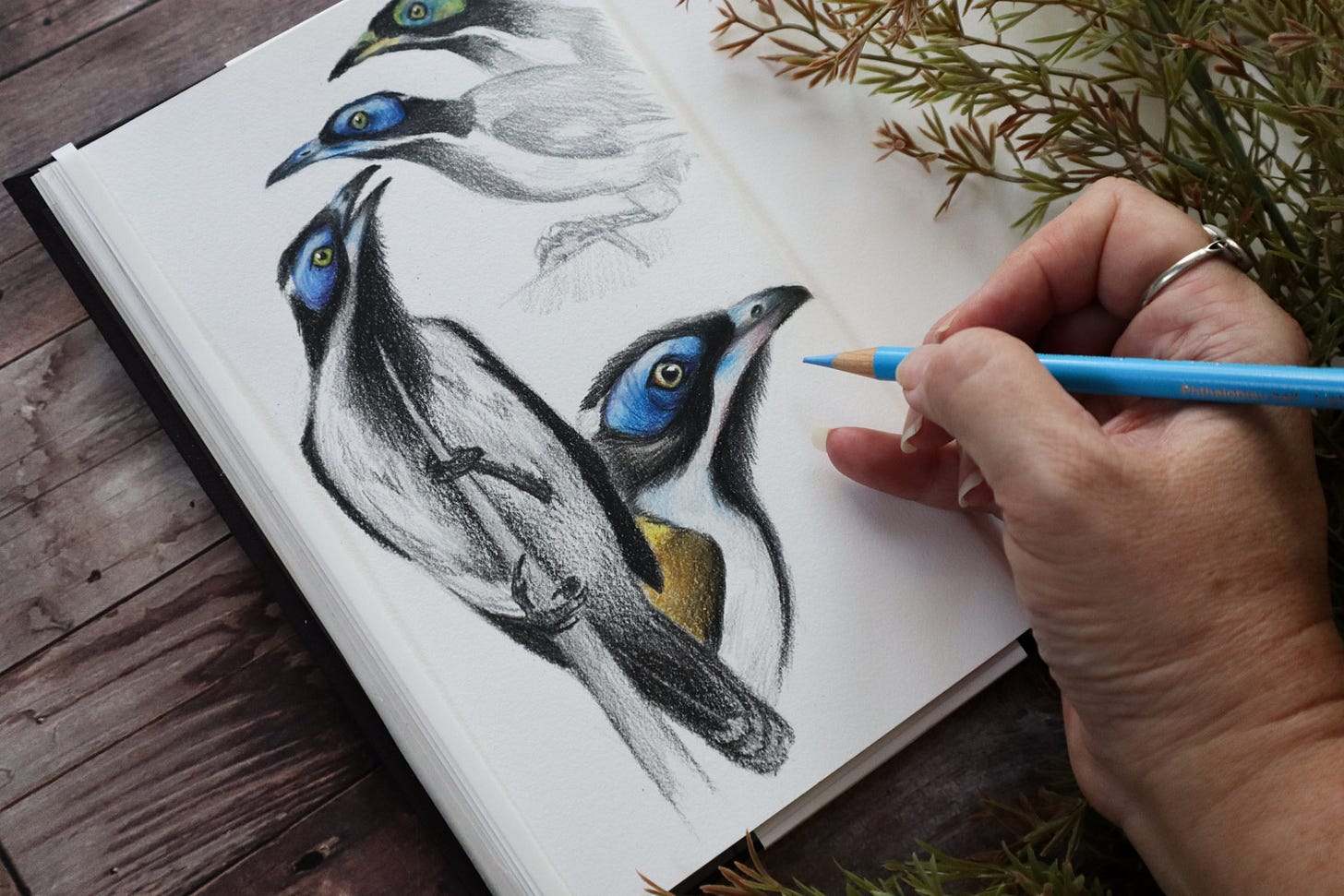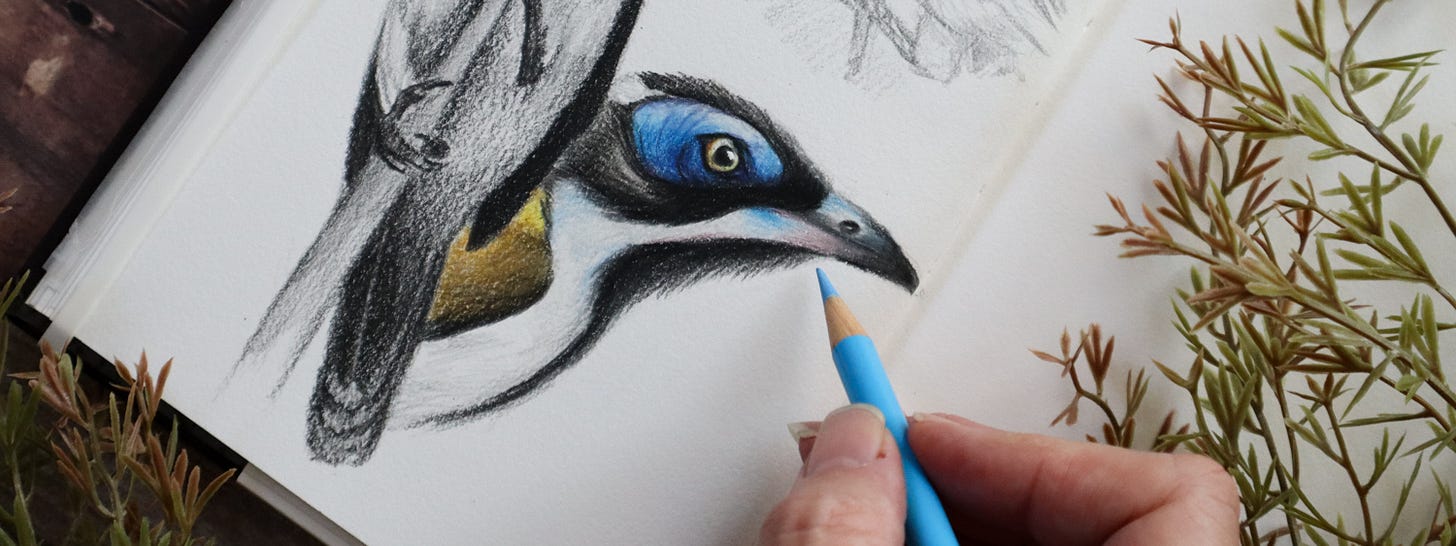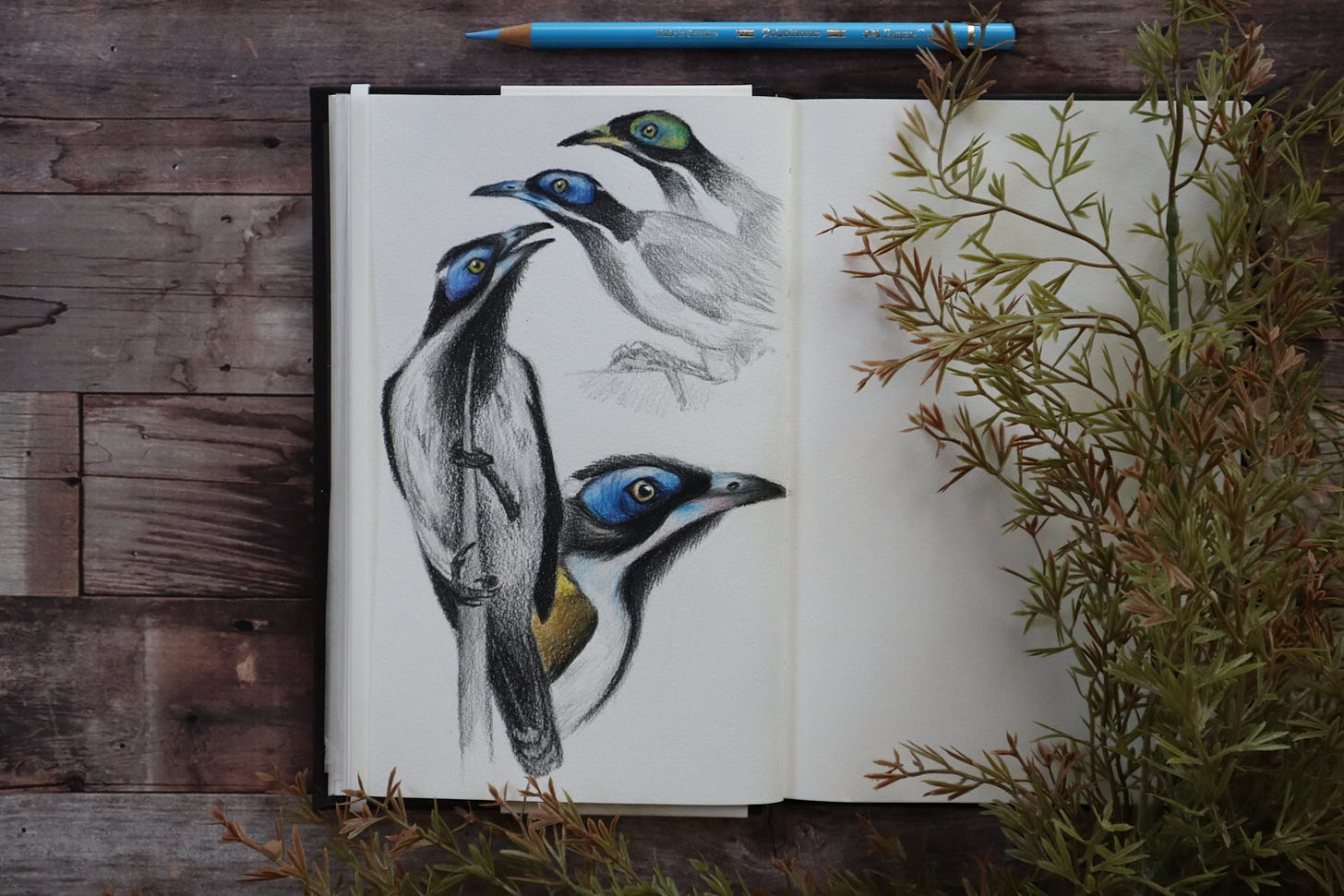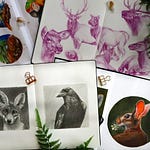There was a new-to-me call out the studio window. Persistent. Not a juvenile call of any of my regular birds that I could discern, I began to wonder whether there was a new-to-my-yard-area cuckoo that had laid their babes safe in the arms of another. The Red Wattlebird had been calling a lot lately, perhaps they were calling to their changeling child. Every time I heard it I would race to the window or to the kitchen to try and catch a site…but nothing.
I was telling my brother about the conundrum I had while we were in the kitchen, and then came the sound, and then an olive-gold (and blue?) flash. Not an Olive-backed Oriole, and I know their sounds anyway. Not a Figbird. I whipped my cell phone up and got some dreadful zoomed-in-as-far-as-possible shots.
A Blue-faced Honeyeater.
In July last year I went on a trip to see where my father was born and spent his youth, and while there also took in Dubbo zoo. I have said this here before, that I have a difficult relationship with zoos, but I know that this is considered Australia’s greatest open plains zoo, with conservation as a priority, including a wildlife hospital for local wild-beings on site, education, and more. And I was not disappointed. It spurred my Wild August drawings, and has been on the back of my thoughts since - I long to go back with new eyes, to see more and see more.
On the first day of our visit, we went on an early behind the scenes walk before the zoo opened, and I was thrilled that while we waited for our guide I got to see Blue-faced honeyeaters bouncing up and down the trunk of a gum tree, looking under loose bark and in crevices for something delicious crunchy and sweet (eww).
On the second day of visiting, we sat at the outdoor tables to have hot chocolate and a bicky (biscuit) and they showed their cheeky side, coming down to ask very nicely for a taste of those sweet biscuits please. They are quite large, and these guys were plump and very well fed. There was a juvenile or two, learning the pinching-from-the-tourists trade from the adults. But the vibrance of their blue facial skin really surprised me, seeing them up close and in real life rather than just photos - it gleamed, almost shimmered, with subtle saturated blue-hue shifts. The birds were also bigger than I thought they would be. They were more beautiful than I already thought they were. Intelligent and considering, alert and assured. The juveniles had skin that was turning from yellow to blue - so patchy green, basically.
Did I mention the vibrance of the adult blue facial patches?? They are a pretty bird anyway, their green-gold mantle, and slightly burnt umber shoulders are striking and almost iridescent against their white and black belly and bib. But that face. The slight blue markings on the beak. The pale lemon eyes The little patch of white feathers on the head. I was enamoured. All these exotic animals in the zoo, and the local Blue-faced Honeyeaters utterly delighted me every bit as much (and the Apostle birds, don’t even get me started).
“Knowing someone who belongs to another species can enlarge your soul in surprising ways.”
― Sy Montgomery, How To Be A Good Creature: A Memoir in Thirteen Animals
A Blue-faced Honeyeater.
But to see one in my yard? I knew they went to the coastline further north in Queensland and northern NSW, otherwise I thought they were only out west from here.
In conversation with the local bird group, it seems there is a very small group of them here on the Central Coast now, only for the last couple of years. While it delights me, absolutely, to have a new visitor to my yard, I also wonder at what is changing to bring these birds further south and east.
This year the humidity has been horrid. I don’t cope with the heat anyway, but add humidity and you have a very unhappy Natalie. This temperate zone I have lived in all my life is not temperate anymore. Perhaps not tropical, not quite, but sub-tropical, surely. Things are changing. We know that on a global scale. We talk about how the climate where we live was different when we were young, 20 years ago, even 10. But when you see birds that belonged to areas north and north west of here becoming more naturalised, yes, there will be many many reasons, but one of them is climate.
A Blue-faced Honeyeater.
I started a new sketchbook this year (to be honest I started four new sketchbooks this year, already) and it is for local birds. It is a sketchbook I will come back to over time, without schedule or obligation. It is a place where I honour place, where I am planted, and who I share this space with. It will have new entries when I have had an interaction that really left me feeling like I can say to a wild being, I see you. That I am present with them, in the moment. Then I will find reference for me to get to understand their anatomy a little better, to see details I could not possible have taken in completely in that instance, and weave together my lived experience with my curiosity and research to create an honouring in tiny pigment scratches. This is how I can give to them. To continue to prioritise providing trees and shrubs and plants that nourish and provide safety. Water baths for them to hydrate and wash. No pesticides or harmful chemicals. A genuine desire to connect and see and protect. And an art practice that is bound together by three things: respect, responsibility, and reciprocity.
A Blue-faced Honeyeater.
Reciprocity. Can I call my making art an act of reciprocity? Is it an exchange for mutual benefit? I think so, ultimately. If my drawings can build awareness, even only to one other person, that being is then seen more, connected with more, and hopefully, given more compassion and understanding. When we build compassion for others - be they humans or more-than-human - we are more likely to want them to be safe, to thrive, to be whole. We can be in-relationship with them in some way. Intentionally providing plants that can nourish and protect these feathered kin is an act of reciprocity, yes, but so is honouring them in pigment on paper. Taking the time to see, to witness, to be full of wonder and awe, to be utterly delighted and excited and like a kid seeing something amazing for the first time.
“But perhaps, in a world “older and more complete” than ours, there is a love that does not demand a reciprocal debt of need.”
― Sy Montgomery, Walking with the Great Apes: Jane Goodall, Dian Fossey, Biruté Galdikas
Welcome to my yard, Blue-faced Honeyeater. You are seen, you are adored. I am so lucky to share this wild world with you.



















Share this post